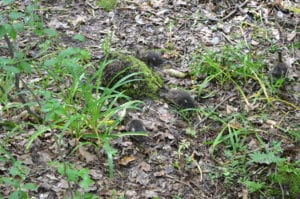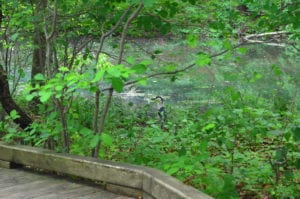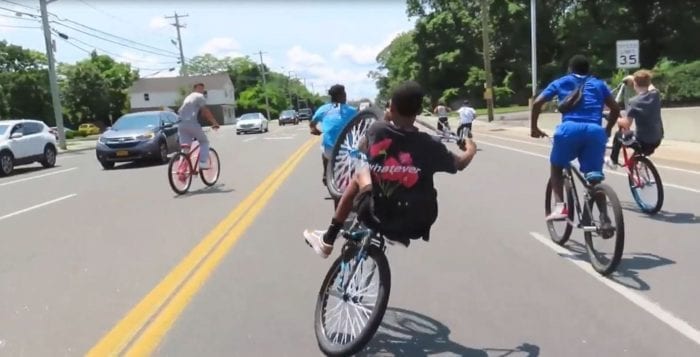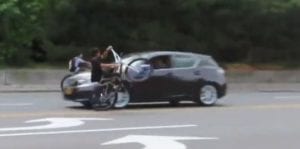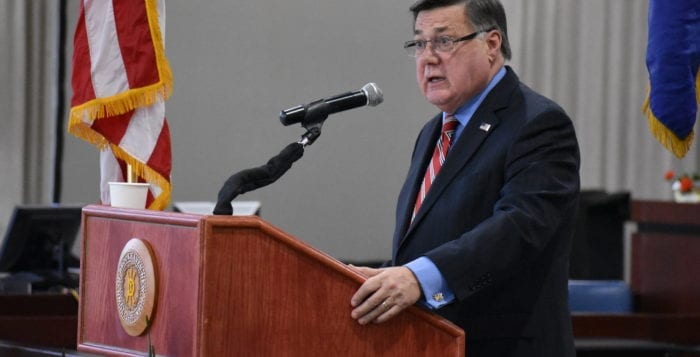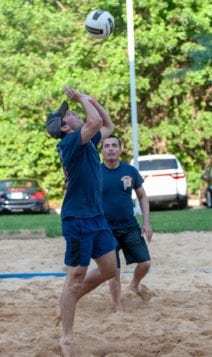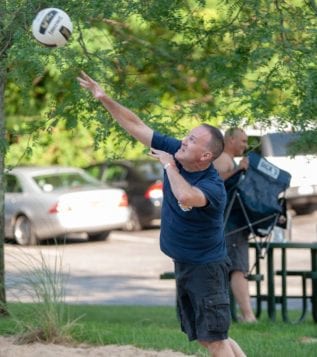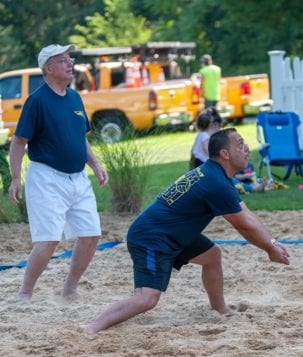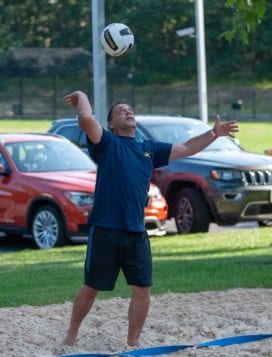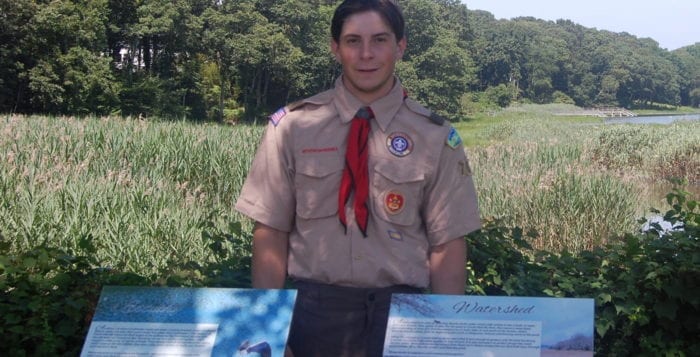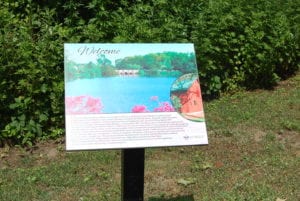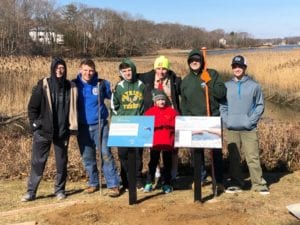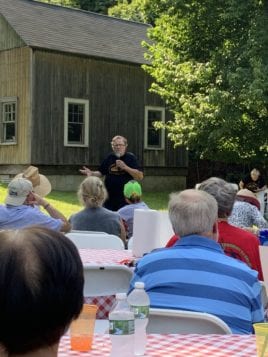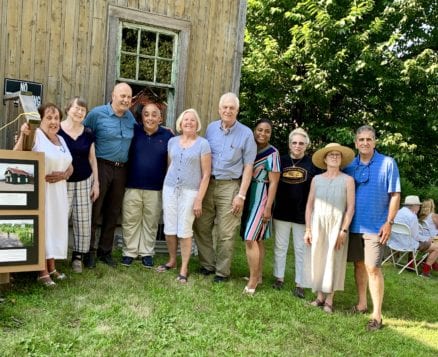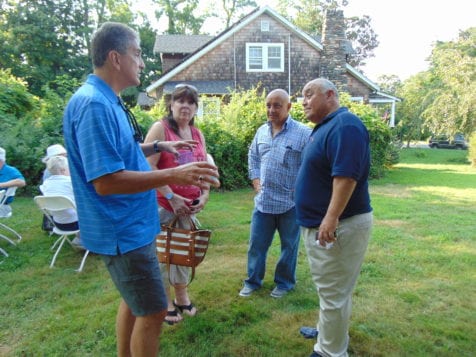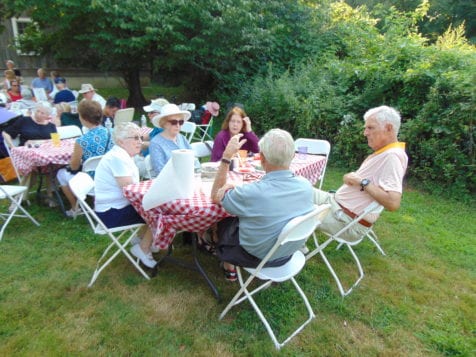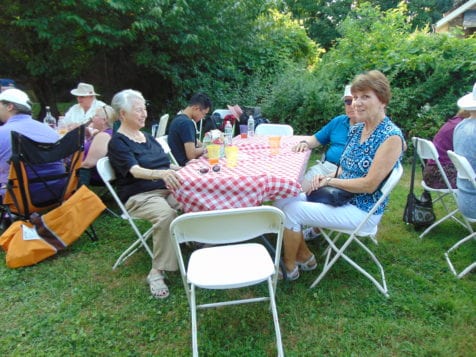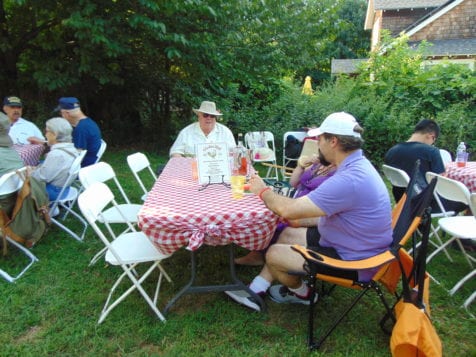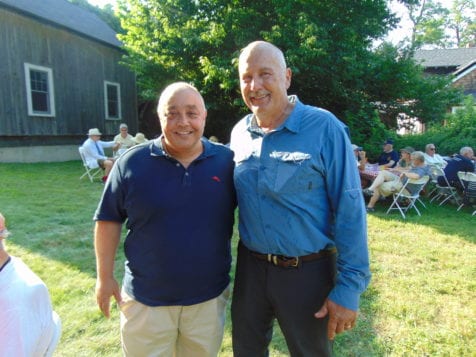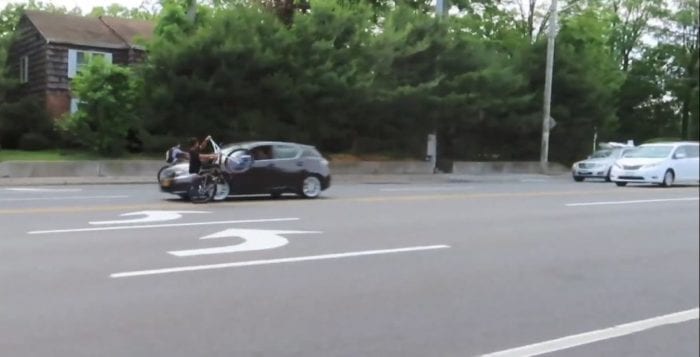By Daniel Dunaief
Some day, a collection of soldiers in the Army may be sleeping in a bunker near an explosion. Their lives may depend on the ability of their bunker to crack, rather than fracture and collapse.
Kedar Kirane, an assistant professor in the Department of Mechanical Engineering at Stony Brook University, recently received a $359,000 grant from the Army Research Office’s Young Investigator Program to develop a computational model to predict the fracturing behavior of woven textile composites under dynamic loading, such as blasts and other impact loads.
In his work, Kirane hopes to develop a model for how composite materials fracture.

Ralph Anthenien, the division chief for mechanical sciences in the U.S. Army Research Office, described the process of granting these awards as “very selective.”
The program supports “innovative breakthroughs,” he said. Part of the charter is to fund “high risk research, which won’t have a 100 percent chance of success,” but could provide a way forward for research.
Ultimately, the hope in the work the Army funds is to “protect soldier’s lives and protect Army systems,” Anthenien continued. The research should “make everything for the Army better.”
Kirane suggested that this research could also have implications in civilian life, such as to predict automotive crashworthiness. While it’s possible to consider fractures and cracks at the atomic scale, he said he is focusing on the macro level because the structures he is studying are so large.
“If you start looking at the atomic scale, it would be impossible because we don’t have the kind of computing power we would need” to convert that into buildings, bridges or other structures, Kirane said.
He is exploring the rates of loading for these fiber composite materials and would like to understand how these objects hold up in response to a blast or a projectile hitting it, as opposed to a more gradual progression of stressors.
Kirane will not conduct any of the laboratory work that explores the fracturing and reaction of the materials. Instead, he will use public data to calibrate and verify his model. The grant supports only the development of the model, not the performance of any physical experiments.
While materials are manufactured with different procedures, he is focused on how the materials fracture, crack and branch. The work is “more of a fundamental study rather than an applied study for a particular material,” he said.
One of the areas of focus in Kirane’s research involves analyzing the branching of cracks during fracture. As the cracks branch, they multiply, causing the material to break into multiple pieces.
The speed at which load builds on an object determines its reaction. A slow buildup typically causes one crack to form, while a more rapid load can cause a single crack that can branch and rebranch to produce multiple cracks.
“Being able to model this is complicated,” Kirane said. “The more it fractures, the more energy it can dissipate.” Ultimately, he would like his model to provide the Army with an idea of how much load a structure can withstand before the developing defects compromises its integrity.
In other projects, Kirane’s work will try to extrapolate from studies of smaller objects up to much larger manufactured structures. Ideally, he’d gain a better understanding of how to extend the information up to the scale at which people live.
He starts with objects that are of various dimensions, at 10 by 10 millimeters and then doubles and quadruples the size to determine the effect on their resilience and strength. There are mechanics-based scaling laws to extrapolate the structure strength to larger sizes, Kirane explained. It depends on the material and its fracturing behavior.
“That is the use of having a model: you can do some experiments in the lab, develop the model, calibrate it, use the model to predict the response and the scaling correctly,” he said.
Kirane explained that he usually tries to get data from a published journal, especially from sources where he knows the principal investigators produce reliable research.
Indeed, sometimes the models can suggest problems with the data.“There is some back and forth” between the bench researchers and the scientific modelers, he said.
Kirane, who joined Stony Brook two years ago, has two doctoral students in his lab, one master’s student and several undergraduates.
A resident of Westbury, he commutes about an hour back and forth. He enjoys visiting Jones Beach and appreciates the proximity to New York City.
Raised in Pune, India, Kirane speaks English, Hindi and Marathi, which is his native language. During his schooling, which was in English, he not only pursued his interest in science but also played a percussion instrument called the tabla and was a gymnast. He says he can’t do any of the gymnastics routines from his youth today, although he does practice yoga and his gymnastics training helps.
As for his future work, he hopes to start collaborating with scientists at Brookhaven National Laboratory, where he’d like to conduct some research at the National Synchrotron Light Source II. He’d like to understand how rocks fracture at the atomic scales.
In his own life, Kirane said he doesn’t recognize failures but sees any result that falls short of his hopes or expectations as a learning opportunity. “If something doesn’t go as planned, it’s an opportunity to retry,” he explained.
Indeed, in Kirane’s research, scientists call the process of fracturing “failure,” but that judgment depends on the context. When structures are “supposed to be sacrificial and dissipate energy by fracturing,” he said, then that “fracturing is good and not equal to failure.”



